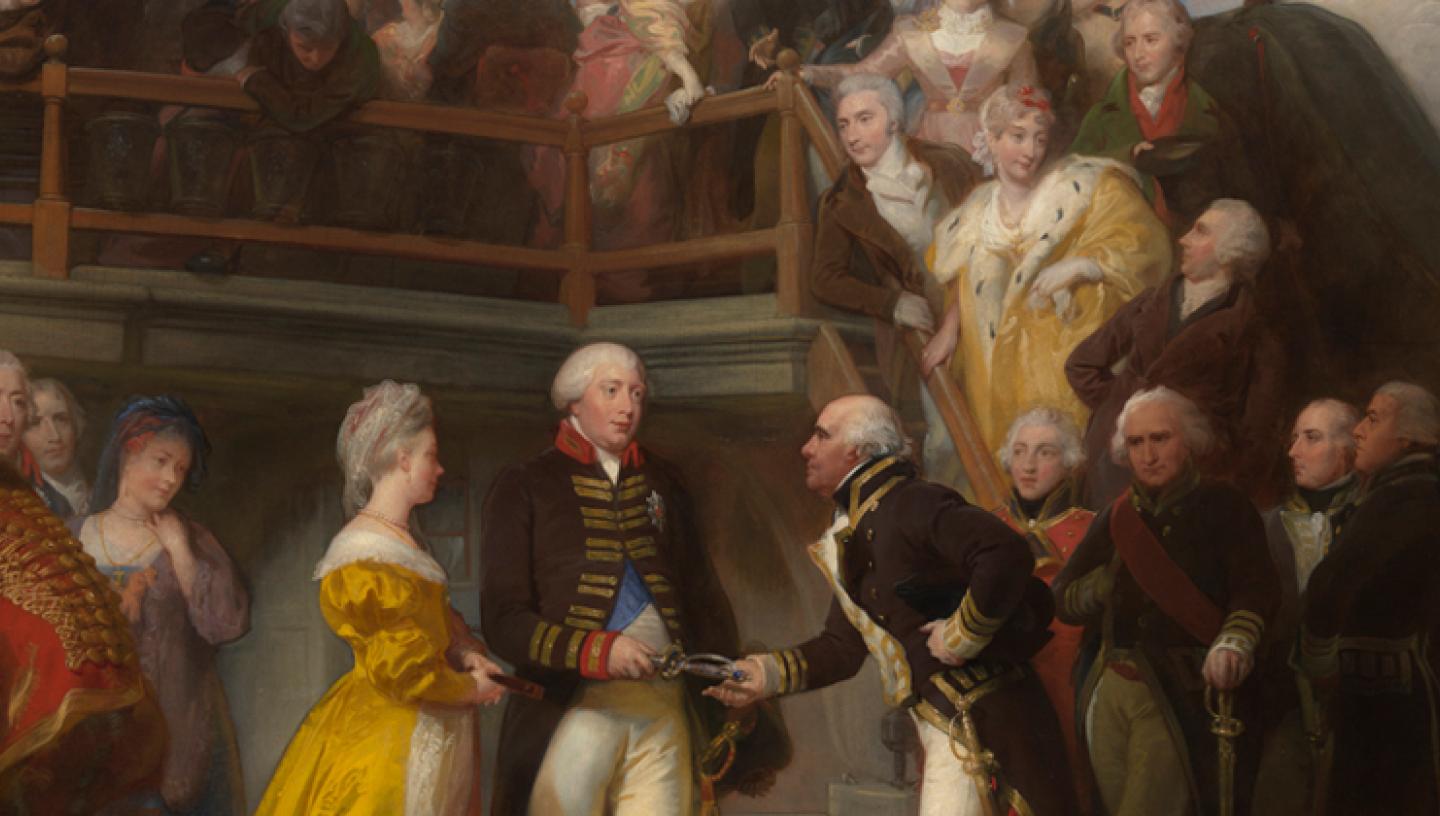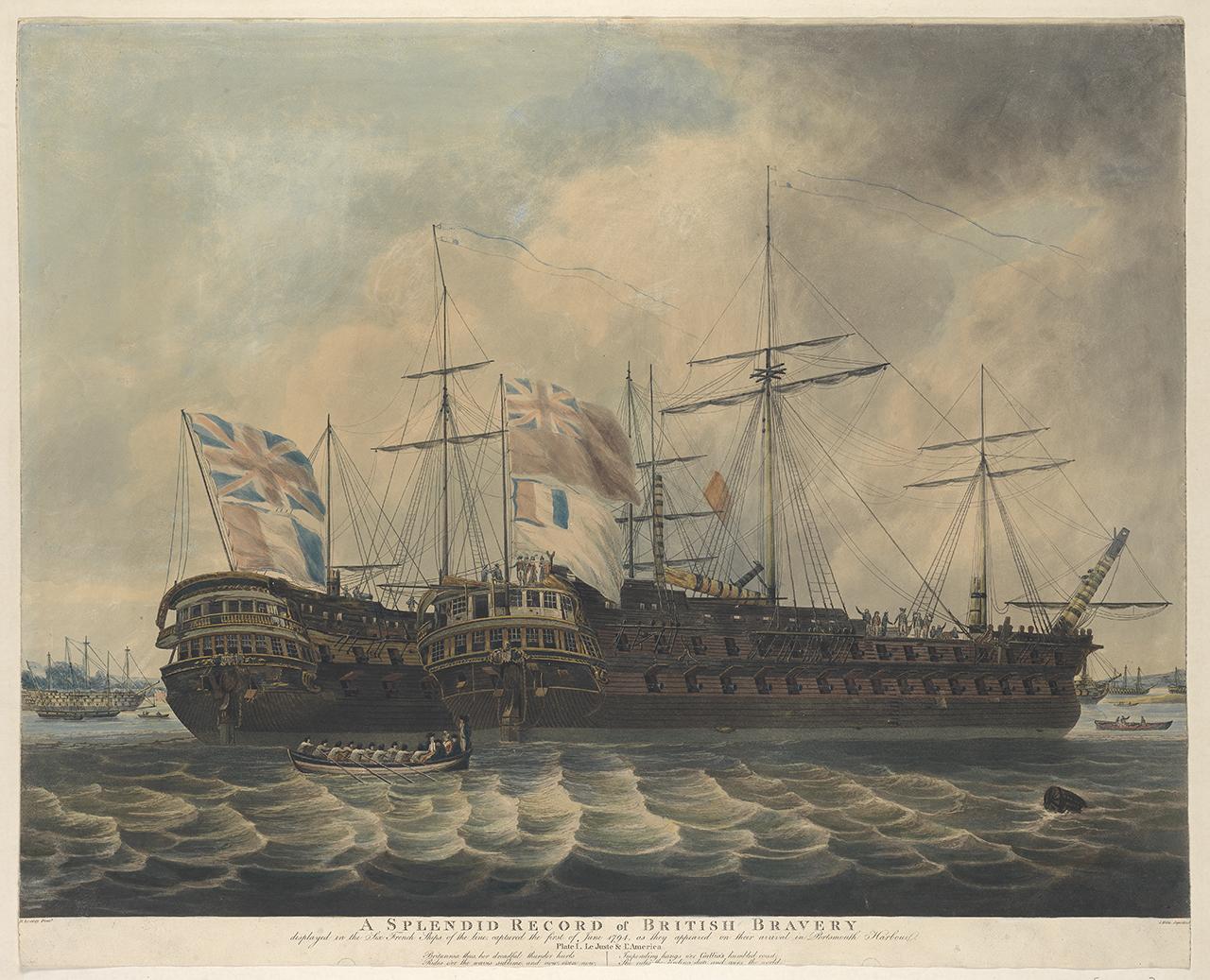
One unassuming print in our collection reveals a different perspective to the extraordinary celebrations that followed the Battle of the Glorious First June. Hazel Vidler, Ship Portrait volunteer, reveals more.
For background info on the Ship Portrait project, read the first blog in this series

This unassuming print really caught my eye when I discovered that the French ships depicted, L’Amerique and Le Juste, were two of those captured at the first naval battle of the Revolutionary Wars with France. Looking remarkably like a pair of forlorn convicts in chains, the print suggests nothing of the extraordinary celebrations that the battle had prompted all over Britain. The Battle of the First of June, 1794, or the “Glorious First”, as the battle quickly became known, took place off Ushant, an island 400 nautical miles off the west coast of France. Admiral Howe had been sent to intercept a French convoy carrying much-needed supplies of food from America. Although Howe defeated the French fleet escorting the convoy, sinking one ship and capturing another six, the supplies reached France intact. This failure on Howe’s part did not prevent a jubilant public in London from celebrating the battle as a wholesale victory over Revolutionary France, not only seeing off the immediate threat of invasion but establishing Britain’s superiority at sea. Illuminations took place over several nights across London and the battle was celebrated in several plays – one by Sheridan – just days and weeks after news of the victory broke. It also became one of the most widely depicted naval battles in paintings and prints, easily trumping the number of prints produced of the Defence of Gibraltar of 1782.
Howe’s arrival back in Portsmouth on 13 June with his six French prizes prompted an array of eminent artists, including Philippe Jacques de Loutherbourg, James Gillray, Mather Brown, and Robert Cleveley, to race down to the port to sketch the ships from life. It is not known whether Richard Livesay formed part of this cohort. The set of four prints he produced of the French prizes, of which this is the first, were published on 10 March 1796, the year he moved to Portsea after being appointed drawing master to the Royal Naval College at Portsmouth. The print depicts L’Amerique and Le Juste in Portsmouth Harbour. L’Amerique was taken by Leviathan, commanded by Lord Hugh Seymour (1759-1801) at the battle. Significantly, she was the ship from which was seized the Republican boarding flag – now in NMM’s collection – emblazoned with the chilling battle cry “MARINS / LA REPUBLIQUE / OU LA MORT”.
These white silk banners embroidered with gold thread appear to have been issued to the French squadron shortly after the Revolution, and represent an attempt by the leaders of the new Republic to urge its largely inexperienced sailors to fight to the death for what was essentially an elusive political ideal.
In 1794, the Glorious First was considered the greatest British naval victory in living history. Such was the scale of this victory that it became the first battle for which British officers received a medal and the first to be celebrated by an immediate Royal review of the fleet, seeing George III and Queen Charlotte travel to Portsmouth to present the awards to Howe and his officers in person.
The battle – and the heroism of Lord Howe - has sadly been replaced in the popular imagination by the later unqualified conquests by Admiral Nelson at the Nile and Trafalgar, but these prints, along with the monumental paintings and multitude commemorative objects produced in celebration of the battle are testament to the esteem with which the victory won at the Glorious First was held by the nation.

